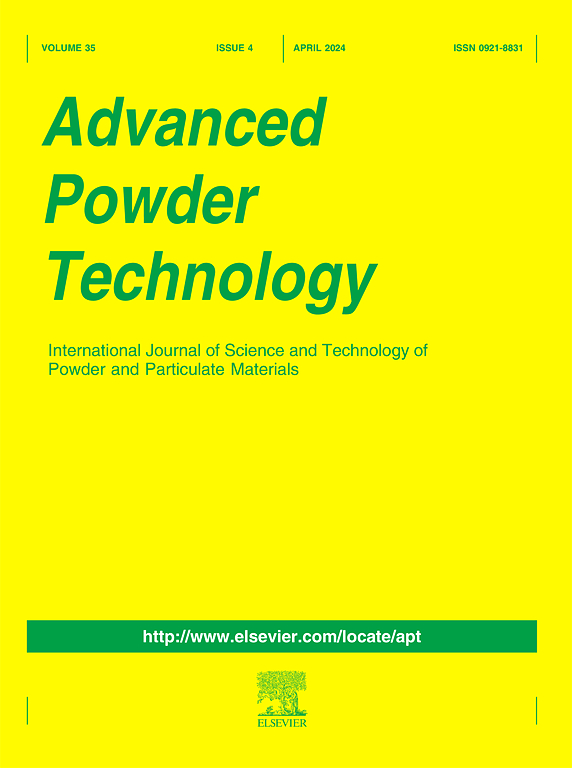Fly Ash-MgO infused CaO-based sorbent for high-temperature CO2 capture under realistic carbonation and harsh calcination conditions
IF 4.2
2区 工程技术
Q2 ENGINEERING, CHEMICAL
引用次数: 0
Abstract
Calcium Looping (CaL) technologies suffer from sintering-induced agglomeration, which reduces their performance under repeated carbonation and calcination cycles. The drawback has attracted extensive research towards modifying the sorbent by adding different inert materials through various synthesis techniques. Among various inert materials, fly ash (FA) emerges as a low-cost and abundantly available candidate containing refractory material that can resist sintering. The current work investigates the infusion of an optimized proportion of FA and MgO precursor (MgOP) into a calcium-based organic precursor (CaAc) through the sol–gel combustion synthesis to enhance carbonation conversion (XCBN) and stabilize cyclic performance. The study includes characterizing as-synthesized and spent sorbent while evaluating cyclic capture performance thermo-gravimetrically under realistic carbonation (CO2 = 20v/v%, tCBN = 20 mins, TCBN = 650 °C) and harsh calcination (CO2 = 80v/v%, tCALC = 10 mins, TCALC = 900 °C) conditions with shorter transition time. The sorbent performance was optimized based on the FA/inert ratio (FA_y) and CaAc/sorbent ratio (CaAc_xCaAc). The result showed comparatively better performance of FA_0.4 with deterioration of only 10.38 % over 5 cycles. Despite a lower XCBN (55.77 %) of CaAc_0.8 in the 1st cycle compared to CaAc_0.9 (79.74 %), the former exhibited more excellent cyclic stability, losing only 6.04 % in XCBN after 5 cycles compared to the latter (38.75 %). Temperature sensitivity studies on CaAc_0.8 established 650 °C as the most suitable carbonation temperature, incurring lower deterioration than 700 °C and 750 °C. Overall, CaAc_0.8 (8 wt% FA, 12 wt% MgOP) yielded the most stable cyclic performance (10 cycles) under realistic carbonation and harsh calcination conditions, proving its efficacy for CO2 capture.

粉煤灰- mgo注入cao基吸附剂在实际碳化和恶劣焙烧条件下的高温CO2捕获
钙环(CaL)技术存在烧结诱导团聚的问题,导致其在重复碳化和煅烧循环下性能下降。这一缺点吸引了广泛的研究,通过各种合成技术加入不同的惰性材料来改性吸附剂。在各种惰性材料中,粉煤灰是一种成本低、储量丰富、具有抗烧结性能的耐火材料。目前的工作是研究通过溶胶-凝胶燃烧合成将优化比例的FA和MgO前驱体(MgOP)注入钙基有机前驱体(CaAc)中,以提高碳化转化(XCBN)和稳定循环性能。该研究包括表征合成和废吸附剂,并在较短过渡时间的实际碳化(CO2 = 20v/v%, tCBN = 20 min, tCBN = 650°C)和苛刻焙烧(CO2 = 80v/v%, tCALC = 10 min, tCALC = 900°C)条件下对循环捕获性能进行热重评价。以FA/惰性比(FA_y)和CaAc/吸附剂比(CaAc_xCaAc)为指标对吸附剂性能进行了优化。结果表明,FA_0.4的性能相对较好,5次循环仅下降10.38%。与CaAc_0.9(79.74%)相比,CaAc_0.8在第一个循环中的XCBN(55.77%)较低,但前者表现出更优异的循环稳定性,在5个循环后,XCBN的损失仅为6.04%,而CaAc_0.9的循环稳定性为38.75%。对CaAc_0.8的温度敏感性研究表明,650°C是最合适的碳化温度,比700°C和750°C更容易变质。总体而言,CaAc_0.8 (8 wt% FA, 12 wt% MgOP)在实际碳化和恶劣焙烧条件下产生了最稳定的循环性能(10个循环),证明了其对CO2捕获的有效性。
本文章由计算机程序翻译,如有差异,请以英文原文为准。
求助全文
约1分钟内获得全文
求助全文
来源期刊

Advanced Powder Technology
工程技术-工程:化工
CiteScore
9.50
自引率
7.70%
发文量
424
审稿时长
55 days
期刊介绍:
The aim of Advanced Powder Technology is to meet the demand for an international journal that integrates all aspects of science and technology research on powder and particulate materials. The journal fulfills this purpose by publishing original research papers, rapid communications, reviews, and translated articles by prominent researchers worldwide.
The editorial work of Advanced Powder Technology, which was founded as the International Journal of the Society of Powder Technology, Japan, is now shared by distinguished board members, who operate in a unique framework designed to respond to the increasing global demand for articles on not only powder and particles, but also on various materials produced from them.
Advanced Powder Technology covers various areas, but a discussion of powder and particles is required in articles. Topics include: Production of powder and particulate materials in gases and liquids(nanoparticles, fine ceramics, pharmaceuticals, novel functional materials, etc.); Aerosol and colloidal processing; Powder and particle characterization; Dynamics and phenomena; Calculation and simulation (CFD, DEM, Monte Carlo method, population balance, etc.); Measurement and control of powder processes; Particle modification; Comminution; Powder handling and operations (storage, transport, granulation, separation, fluidization, etc.)
 求助内容:
求助内容: 应助结果提醒方式:
应助结果提醒方式:


